Quán này tụi mình được vợ chồng người bạn giới thiệu, tụi mình ấn tượng với khoai tây chiên ở đây, được làm với nhiều vị, quán sử dụng 3 loại sốt riêng ăn kèm với các món ăn tại quán mang đến sự mới lạ hơn so với 1 vài quán khác.
Địa chỉ:
67 – 69 Cách Mạng Tháng 8, P. Bến Thành, Quận 1, TP. HCM
Sau đây là 1 vài đánh giá của tụi mình:
Không gian: chi nhánh này đối diện chỗ rạp Trống Đồng, dễ tìm, bên ngoài nhìn không rộng lắm, nhưng khi vô trong cũng nhiều bàn đó, có trên lầu nữa. Quán nhìn hơi cũ, trang trí bình thường, ngày lễ đông quá, mấy bạn nhân viên dọn dẹp không kịp nên nhìn bề bộn.
Phục vụ:
Đi dịp lễ, Tết nên phục vụ hơi chán ah, vì quá đông, nhân viên lại ít. Lúc đầu, tụi mình vô nhân viên còn không hay biết, dọn dẹp bàn không kịp. Khúc sau có đỡ hơn chút, nhưng nhìn chung đi ăn mấy ngày này sẽ phải đợi lâu.
Thực đơn:
Phần gà rán và gà nướng thì mình thấy khá giống các quán gà kiểu Hàn khác. Đặc biệt bên đây có bán thêm lẩu quân đội (budaejjigae), tokbokki, khoai tây chiên cũng nhiều vị nên nhìn chung sẽ có nhiều sự lựa chọn cho mình.
Món ăn:
Thấy ở đây có bia bưởi hồng lạ lạ nên mình gọi thử, soju bưởi thì mình có uống rồi, nhưng bia thì mới nghe. Thật sự thì không ngon như mình tưởng nha, giống nước trái cây, nhẹ hều và lạt. Nên thôi thì uống bia/ rượu khác, không thì nước ngọt. Giống mấy nhà hàng Hàn khác, khi bạn vô quán có bưng ra 1 bình nước lọc miễn phí, không gọi nước cũng được.
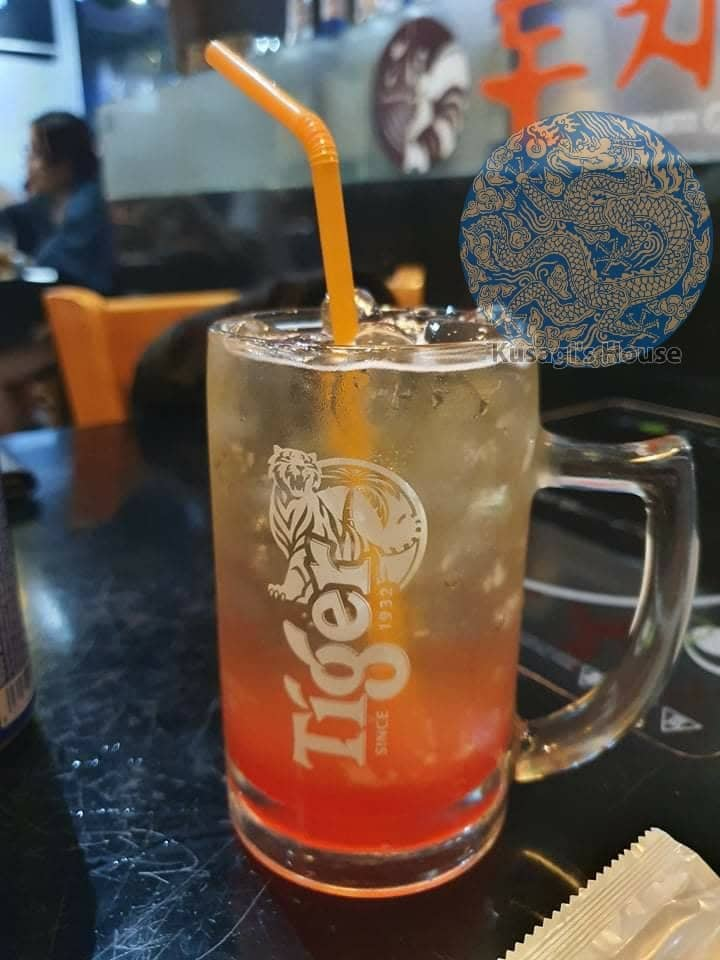
Phần salad bắp cải (free) ăn kèm cho đỡ ngán, 3 loại sốt: mù tạt mật ong ngọt ngọt, chua chua, nồng nhẹ; nước tương hành cũng mặn mặn, ngọt ngọt và sốt chua ngọt. Tụi mình gọi khoai tây chiên vị mật ong, khoai tây giòn, nóng hổi, với món này mình thấy chấm sốt mù tạt là hợp nhất.
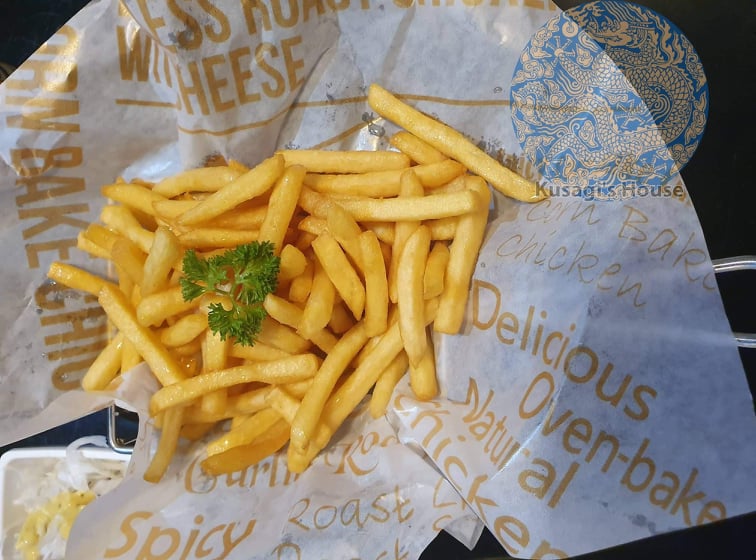
Khoai tây chiên mật ong – 70k 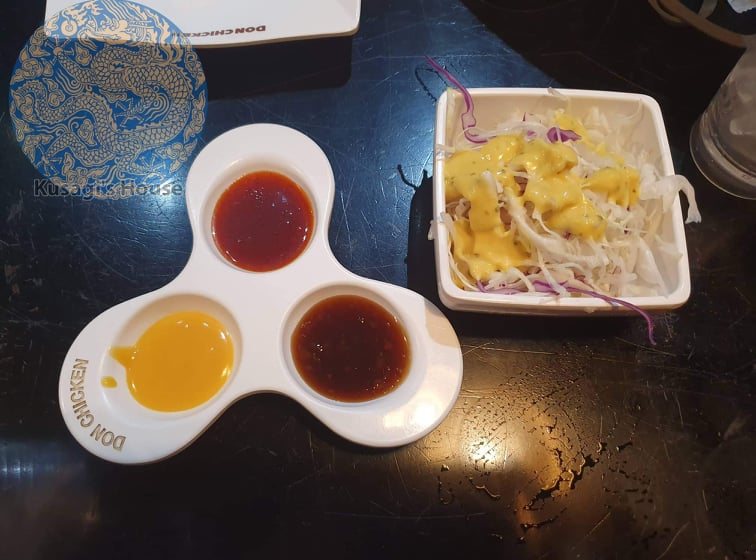
Gà tụi mình gọi 1 phần gà rán lớn và phần gà không xương sốt phô mai:
- Gà rán: giòn, 1 phần nhiều hơn mình tưởng, thịt gà cũng có ướp rồi, chấm sốt chua ngọt hoặc nước tương hành đều hợp.
- Gà không xương sốt phô mai: phần này thì hơi bở, mỗi lần tách miếng gà là gà 1 nơi, phô mai 1 nơi, không dính nhau, ăn tới gần cuối thiếu điều ăn phô mai không, ăn vài miếng thấy cũng ngon, nhưng ăn nhiều dễ ngán. Phần này hơi bị nhiều với tụi mình, kêu lẩu chắc sẽ hấp dẫn hơn đó.
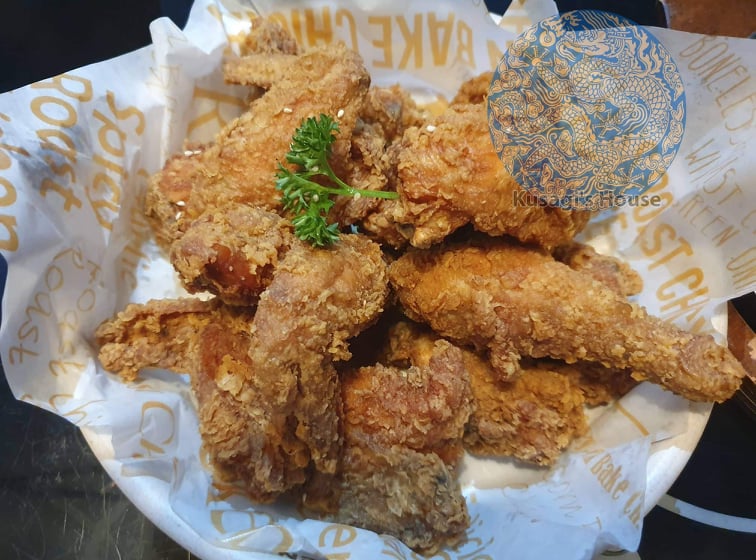
Gà rán – 280k 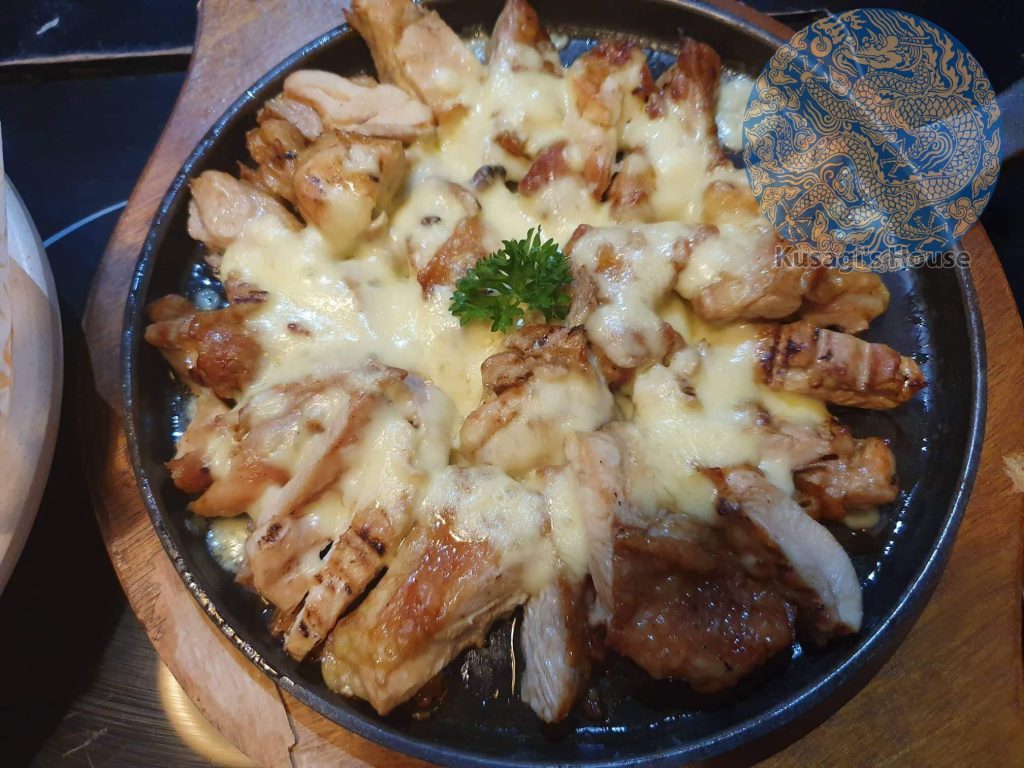
Gà không xương phô mai – 280k
Giá cả: hợp lý, tụi mình kêu 3 phần trên là ăn no luôn, một phần ở đây nhiều, chất lượng . Thiệt hại: ~773k/ 3 người. Giá trên hình chưa bao gồm 10% VAT, khăn lạnh có tính tiền: 2k/ cái. Giữ xe: Free
Cảm ơn các bạn đã đọc bài viết. Hẹn gặp các bạn ở bài review tiếp theo.
Usagi



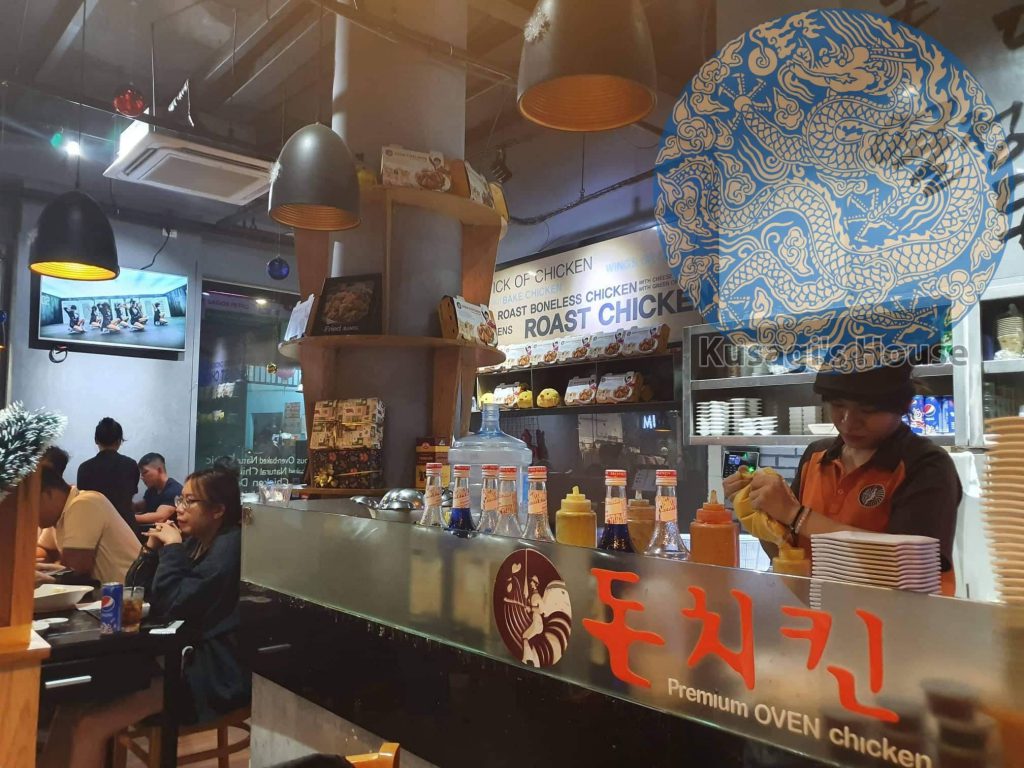
coumadin pill – warfarin canada purchase cozaar sale
Официальный TG канал проекта – 7k casinо, теперь в вашем Telegram! Актуальное зеркало, ссылки на вход, промокоды на фриспины, регистрация. слоты, играй на реальные деньги с нами! Сайт 7к казинo
https://vk.com/wall-230180565_2
Официальный TG канал проекта – 7k casinо, теперь в вашем Telegram! Актуальное зеркало, ссылки на вход, промокоды на фриспины, регистрация. слоты, играй на реальные деньги с нами! Сайт 7к казинo
https://vk.com/wall-230180565_3
cd clock alarm cd player
cd player with clock cd clock
https://vk.com/wall-229186821_26
https://t.me/s/Slot_7k
здесь водкабет казино
посмотреть на этом сайте казино водкабет
Why axolotls seem to be everywhere — except in the one lake they call home
первый анальный секс
Scientist Dr. Randal Voss gets the occasional reminder that he’s working with a kind of superstar. When he does outreach events with his laboratory, he encounters people who are keen to meet his research subjects: aquatic salamanders called axolotls.
The amphibians’ fans tell Voss that they know the animals from the internet, or from caricatures or stuffed animals, exclaiming, “‘They’re so adorable, we love them,’” said Voss, a professor of neuroscience at the University of Kentucky College of Medicine. “People are drawn to them.”
Take one look at an axolotl, and it’s easy to see why it’s so popular. With their wide eyes, upturned mouths and pastel pink coloring, axolotls look cheerful and vaguely Muppet-like.
They’ve skyrocketed in pop culture fame, in part thanks to the addition of axolotls to the video game Minecraft in 2021. These unusual salamanders are now found everywhere from Girl Scout patches to hot water bottles. But there’s more to axolotls than meets the eye: Their story is one of scientific discovery, exploitation of the natural world, and the work to rebuild humans’ connection with nature.
A scientific mystery
Axolotl is a word from Nahuatl, the Indigenous Mexican language spoken by the Aztecs and an estimated 1.5 million people today. The animals are named for the Aztec god Xolotl, who was said to transform into a salamander. The original Nahuatl pronunciation is “AH-show-LOAT”; in English, “ACK-suh-LAHT-uhl” is commonly used.
Axolotls are members of a class of animals called amphibians, which also includes frogs. Amphibians lay their jelly-like eggs in water, and the eggs hatch into water-dwelling larval states. (In frogs, these larvae are called tadpoles.)
Most amphibians, once they reach adulthood, are able to move to land. Since they breathe, in part, by absorbing oxygen through their moist skin, they tend to stay near water.
Axolotls, however, never complete the metamorphosis to a land-dwelling adult form and spend their whole lives in the water.
“They maintain their juvenile look throughout the course of their life,” Voss said. “They’re teenagers, at least in appearance, until they die.”
Axolotl problems
As Mexico City grew and became more industrialized, the need for water brought pumps and pipes to the lake, and eventually, “it was like a bad, smelly pond with rotten water,” Zambrano said. “All of our aquatic animals suffer with bad water quality, but amphibians suffer more because they have to breathe with the skin.”
жесток порно видео
To add to the axolotls’ problems, invasive fish species such as carp and tilapia were introduced to the lake, where they feed on axolotl eggs. And a 1985 earthquake in Mexico City displaced thousands of people, who found new homes in the area around the lake, further contributing to the destruction of the axolotls’ habitat.
These combined threats have devastated axolotl populations. According to the International Union for Conservation of Nature, there are fewer than 100 adult axolotls left in the wild. The species is considered critically endangered.
While the wild axolotls of Lake Xochimilco have dwindled to near-extinction, countless axolotls have been bred for scientific laboratories and the pet trade. “The axolotl essentially helped establish the field of experimental zoology,” Voss said.
In 1864, a French army officer brought live axolotls back to Europe, where scientists were surprised to learn that the seemingly juvenile aquatic salamanders were capable of reproduction. Since then, scientists around the world have studied axolotls and their DNA to learn about the salamanders’ unusual metamorphosis (or lack thereof) as well as their ability to regrow injured body parts.
In addition to their role in labs, axolotls have become popular in the exotic pet trade (though they are illegal to own in California, Maine, New Jersey and Washington, DC). However, the axolotls you might find at a pet shop are different from their wild relatives in Lake Xochimilco. Most wild axolotls are a dark grayish brown. The famous pink axolotls, as well as other color variants such as white, blue, yellow and black, are genetic anomalies that are rare in the wild but selectively bred for in the pet trade.
What’s more, “most of the animals in the pet trade have a very small genetic variance,” Zambrano said. Pet axolotls tend to be inbred and lack the wide flow of different genes that makes up a healthy population in the wild. That means that the axolotl extinction crisis can’t simply be solved by dumping pet axolotls into Lake Xochimilco. (Plus, the pet axolotls likely wouldn’t fare well with the poor habitat conditions in the lake.)
Fame and misfortune
The difficulties that axolotls face in the wild are almost diametrically opposed to the fame they’ve found in recent years. Axolotls have captured the human imagination for centuries, as evidenced by their roles in Aztec religion and stories, but the early 21st century seems to be a high point for them. An axolotl graces the 50 peso bill. There are axolotl-inspired Pokemon, and Reddit commenters have noted that the character Toothless from the “How to Train Your Dragon” movie series is distinctly axolotl-like.
The introduction of axolotls to Minecraft in 2021 neatly mapped onto an uptick in Google searches for the animals, and social media makes it easy for people to gain access to photos and videos of the salamanders, particularly the photogenic pink ones often kept as pets.
The axolotl pet trade probably doesn’t directly harm the wild populations since wild salamanders aren’t being poached or taken from Lake Xochimilco. However, Zambrano said, axolotls’ ubiquity in pop culture and pet stores might make people assume that because axolotls “live in all the tanks around the world, they are not in danger.”
нажмите Разработка 3D игр
I don’t think the title of your article matches the content lol. Just kidding, mainly because I had some doubts after reading the article.
Концентраты позволяющие ощутить качество травки
https://rosinwax.org/
my latest blog post https://binslist.com
pop over to this web-site https://binslist.com/
нажмите, чтобы подробнее 3D-движки делать игры
https://tgstat.ru/channel/@VavadaRuGame/802
https://tgstat.ru/channel/@VavadaRuGame/823
sildenafil online